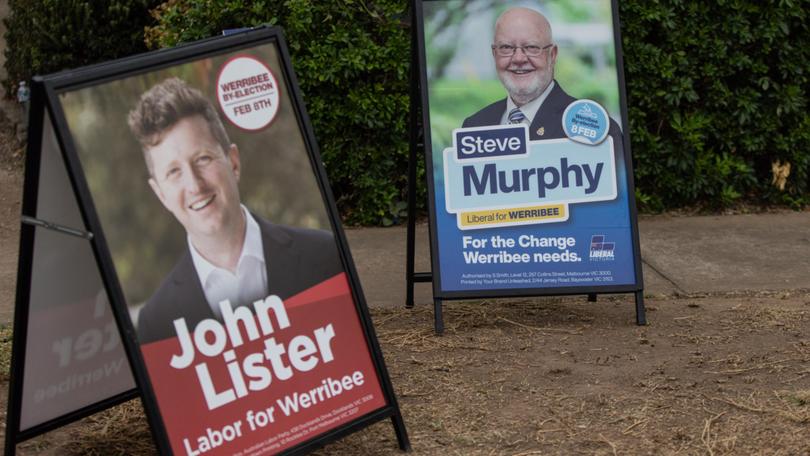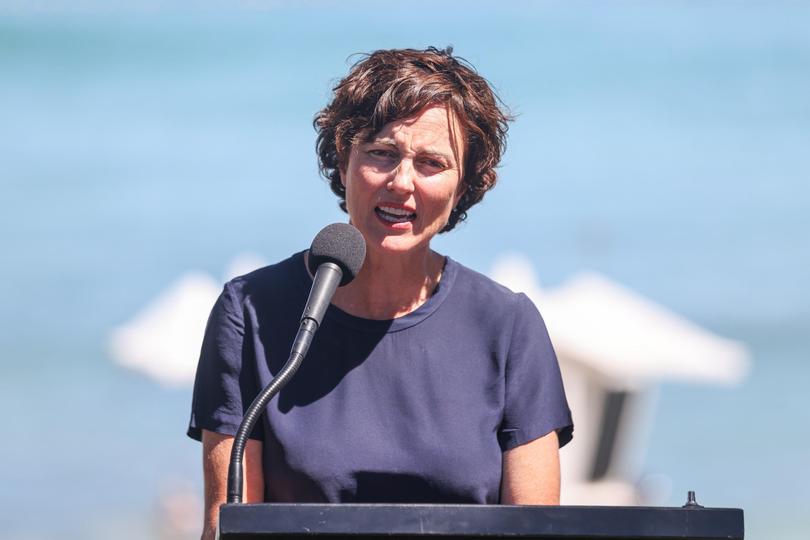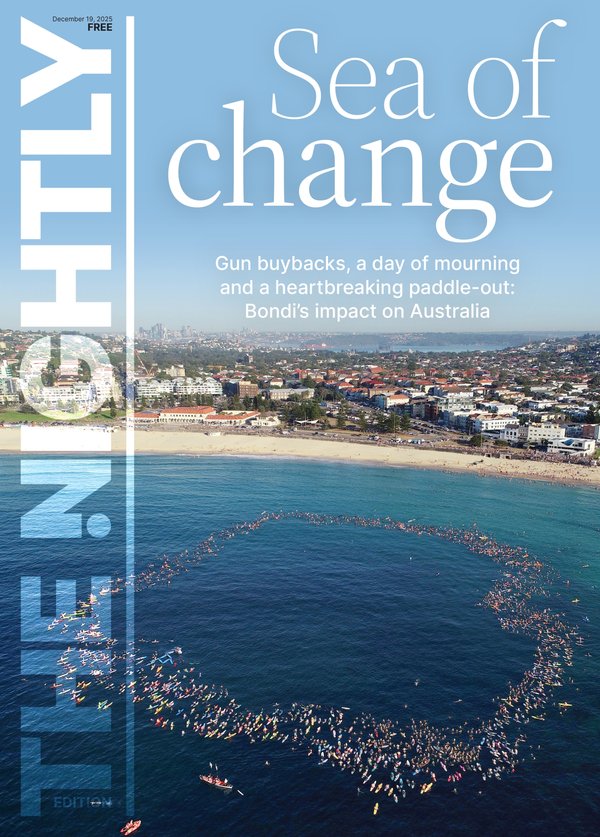NICOLA SMITH: What we can learn from Werribee as voters turn from major parties

The politics of hope will determine the next Federal election, and all major parties are struggling to land a positive message with an electorate disillusioned with the two-party system.
That’s the warning seasoned analysts are issuing the nation’s political leaders as the Werribee by-election in Victoria still hangs in the balance with neither Labor nor the Coalition yet able to propel their candidate over the line.
“There’s everything to win and everything to lose in this (Federal) campaign for both majors,” said Tony Barry, director of corporate affairs at research firm Redbridge Group, reflecting on voter sentiment ahead of the upcoming Federal poll, which has yet to be called.
Sign up to The Nightly's newsletters.
Get the first look at the digital newspaper, curated daily stories and breaking headlines delivered to your inbox.
By continuing you agree to our Terms and Privacy Policy.“There’s a real values disconnect with voters and the major parties,” he said.
“This election will be like 2019 where the campaign will really matter, and the performance of the leaders and the parties and their discipline and ability to stay on message, but also to offer hope to the electorate, will really determine the result.”
At the time of writing, the result of Werribee in Melbourne’s west was too close to call. Liberal candidate Steve Murphy was in the lead, with just over 29 per cent of the first preference votes, with Labor’s John Lister close behind with more than 28 per cent — a 16.7 swing away from the ruling party that has held the seat since 1973.
In a sobering note for the Coalition, most of the Labor vote went to third parties, including independent Paul Hopper who benefited from an 8.8 per cent swing on the first preference count.
But it’s an especially alarming result for the Government just weeks from facing voters across the country, and Federal ministers were quick to downplay the disappointing result on Monday.
Health Minister Mark Butler said the outcome was “not surprising” in Victoria, which had a “tough time” during the pandemic, but he expressed confidence voters would view the Federal election as a “very clear choice.”
Analysts, too, caution against over-interpreting the lessons on a national level from a State election with its own unique dynamics and issues.
“There are different swings. Victorian Labor is clearly on a bit of a downward swing, as is Federal Labor in Victoria,” said Ben Raue, an election analyst at the Tally Room.
However, there is broad consensus that the drop in Labor support and the Coalition’s failure to fully capitalise on it tells a bigger national political story of voters no longer believing the major parties offer a viable solution to their problems.
“The trend of people moving away from the major parties has been going on for a long time. 2022 was a particularly big year for that, and I don’t see any reason to think that it’s changed,” Mr Raue told The Nightly.
Almost one in three voters cast their ballot for minor parties or independent candidates in the 2022 Federal election, the highest number in almost 100 years, according to a study by The Australian National University with Griffith University.
The plunge in major party support below 70 per cent in 2022 was a “long term trend that seems to be accelerating,” said Mr Raue.
“There is no such thing as a safe seat,” concluded Labor’s own review of the 2022 Federal election campaign after a surge in independent MPs that saw a massive expansion of the House crossbench with seven independents and three more Greens.
Mr Raue stopped short of predicting an increase in independent MPs in the next parliament, but the teals, who snatched victory in formerly safe Liberal party seats with a strong climate platform and conservative fiscal politics, have drawn their own conclusions from the Werribee poll.
“In Werribee, neither major party cracked 30 per cent of the primary vote - and that speaks volumes,” said Kate Chaney, the independent member for Curtin.
“Voters are tired of the same old party politics and want real representation that puts communities first. The shift is clear - people are looking for fresh, independent voices who listen and deliver.”
Kylea Tink, an independent who represents North Sydney, said nearly a third of all seats in the lower house had announced their intention to run a community independent this year.
“People are doing that because they are frustrated and fed up with the two-party system that sees us gridlocked around what should be necessary long-term reform,” she said.
Only a large crossbench could bring the balanced politics and accountability that Australians wanted to see, she argued.

Despite the massive swing away from the ruling party in Werribee, the failure of the Liberals to lure jaded Labor voters across the aisle was evidence of the rising phenomena of “double haters” who were no longer convinced either side was the answer, said Redbridge director Kos Samaras on X.
Mr Barry added the close result showed the Victorian Liberal party was not “campaign fit” but stressed this did not mirror the nationwide campaign speared by Opposition Leader Peter Dutton.
A new Redbridge survey published on Monday showed the Coalition narrowly leads Labor by about 51.5 – 48.5 per cent on a two-party preferred basis.
It revealed primary support for the Albanese Government among crucial outer suburban voters sank by five points in the last three months to 27 per cent, with Mr Dutton gaining almost all of these voters and the Coalition’s primary support in the suburbs rising from 40 to 46 per cent.
But the fresh numbers come with a caveat of an “atypically high” figure of 47 per cent of all voters defined as “soft” or “persuadable”, cautioned Mr Barry.
“It shows, again, that a lot of voters are not convinced by either major party,” he said.
“Values are incredibly important in politics” and earlier Redbridge research showed 37 per cent of the electorate did not feel their values aligned with Labor or the Coalition, while 23 per cent did not share values with any parties, including the Greens or the teals, he added.
“One of Albanese’s problems is no one really knows what he stands for. And one of the advantages Dutton has got is that people have a better sense of what his values are,” he said.
“They can’t see any hope with Albanese, it’s just entrenched pessimism, and that’s why they’re kind of really looking at Dutton very hard.”
If one lesson can be drawn from Werribee, a disenchanted and unpredictable electorate promises a Federal poll with all to play for.

